Identities and Technology
What does identity mean when we are talking education and technology. Relaunching my 2toPonder podcast
What does identity mean when we are talking education and technology. Relaunching my 2toPonder podcast
Joanna and Brian Street made a major contribution to the study of identity and education with a comparison autonomous and ideological teaching methodologies in their 1995 work The Schooling of Literacy.pdf (pg 75)

Autonomous Authority flickr photo by FeatheredTar shared under a Creative Commons (BY 2.0) license
The Streets argued that literacy gets embedded in community values and practices but society treated it as just schooling and pedagogy. They then described autonomous and ideological teaching methods that emerge from this paradox.
The Autonomous model views reading writing as neutral processes dependent on the variance found in cognitive and physiological functioning. These models assume a universal set skills relying mainly on decoding and encoding printed text. This had lead to a hierarchical taxonomy of schools and the “pedagogization” of literacy.
It was Brian Street who first proposed the idea of literacies versus Literacy
A great deal of the thinking about literacy…has assumed that literacy witha big “L” and single “y” [is] a single autonomous thing [with] consequences for personal and social development…. One of the reasons for referring to this position as an autonomous model of literacy is that it represents itself as though it is not a position located ideologically at all, as though it is just natural. One of the reasons why I want to call the counter-position ideological is precisely in order to signal that we are not simply talking here about technical features of the written process or the oralprocess. What we are talking about are competing models and assumptions about reading and writing processes, which are alwaysembedded in power relations
Street went on to research “out-of-school” literacies. Street argued that the “objectivization” of literacy instruction was a hidden ideology. Educators and teachers needed to adapt a much broader term of literacy within the community. They called for a vision of literacies that was more multimodal, meaning combining a multiplicity and integration of communication modes like print, sound, and dance. This lead to the inclusion of social semiotic theory of multimodality into the study of education.
Looking back at 30 years of edtech research since Street you see the debate between Autonomous and ideological teaching still play out. What is get rid of woke, DEI, and return to phonics but an ideological reaction to the ideas of folks like Brian Street?
You also have the pedagogization effect. Should gamification be brought into learning? What about popular memes. Do we need to schoolify out of school literacies?
Yet kids do make meaning in ways with technology available to school. Yet they may not be any more technology literate than they were thirty years ago.
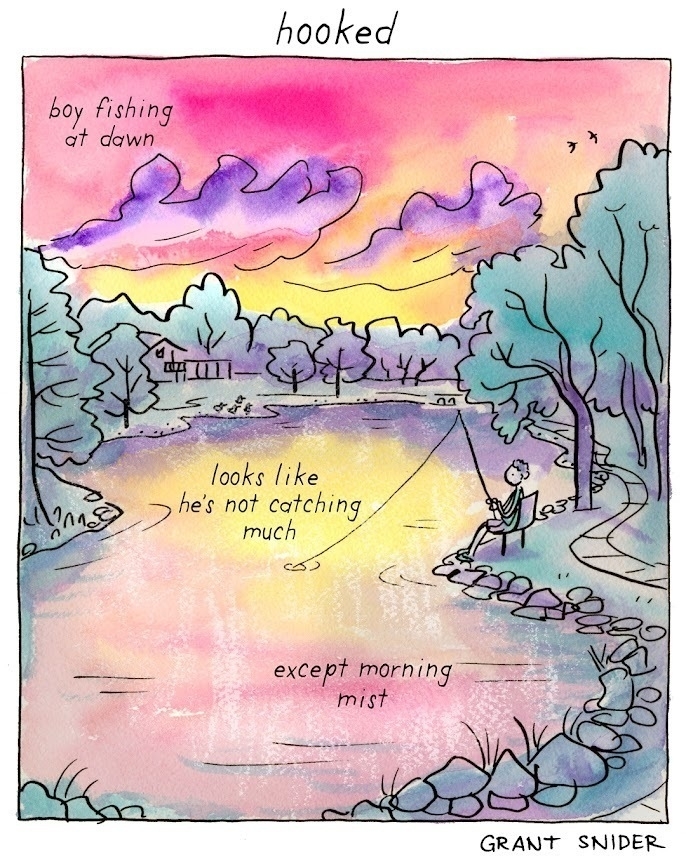
Haiku provide a transformational effect through vagueness that reveal deep metaphors between words. A haiku is a traditional Japanese poem that consists of of three phrases composed of 17 morae, usually in a 5-7-5 pattern.
Moraes do not exists in English. They are somewhere between a syllable and a phoneme. In English a word is made up of syllables, and a syllable is made up of sounds or phonemes. CAT has one syllable, but three phonemes /k/ /a/ /t/. Though in Western Haiku the use of a morae has become synonymous with three lines of 5-7-5 syllables respectively.
In reality it should be 5,7,5 sounds, but that is hard to do semantically in Phonetic languages. So we use syllables and you can break the rules in any poetic format.
Take this example:
new pen footprint in snow to read
That follows a more traditional 5-7-5 sound pattern, but what would be different in the haiku if we used syllable counts:
New pen dances leaving footprints in snow Ink no one will see
In Haiku the sound count is secondary. More important are the concepts of Kigo, Kire, and Ma.
Kigo is an allusion to season. They are usually subtle. Like mentioning a Cherry blossom for spring or a hat for winter. In fact a collection of haiku usually gets organized by season
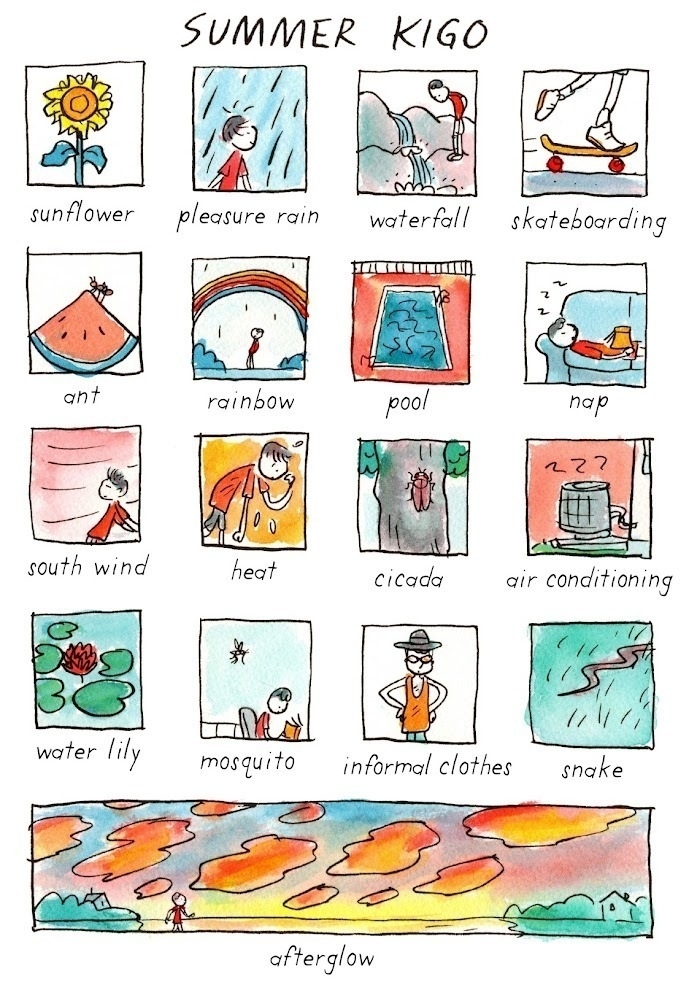
Kire is a cut phrase. It adds distance. There is no English translation for Kire or Kireji. In Haiku the Kire is often used as the middle verse to make a cut between the Season and the metaphor.
The final element of the Haiku is the Japanese aesthetic of Ma. Which refers to the space between. Haiku are sparse poems full of deep metaphor. The meaning is found between words. The Kire creates Ma between the other two lines.
Let’s re-examine the example above
New pen dances leaving footprints in snow Ink no one will see
The footprints in the snow have nothing, but everything to do with a pen writing words nobody will read. It provides a hard cut for the metaphor.
Too often in American Haiku we treat them more as “limericks” and try to use the Kire as a witty joke or Ka, at the end of the third line. A turn to the whimsical rather than inward reflection. The opposite of Ma
Yes haiku uses imagery, emotional appeal, sound, and figurative language. It is a poem. Yet it also strives for deeper hidden meanings. Usually a haiku includes a concrete image drawn from nature that gets connected to a feeling. Think of a haiku as feelings found in nature. In haiku this imagery get expressed in the minimum through the aesthetic of Ma.
In Haiku we use an “absolute” metaphor rather than expressive metaphors open to interpretation. This connects the concrete with universal truths such as cycles in a season
Forget about the 5-7-5 syllable count for now. Too many new writers fixate on counting word parts and forget about sounds.
Focus on the absolute metaphor. Decide what your poem is about. Choose something concrete. Then describe that thing as a season. Next focus on how you can “cut” that idea to bring a universal truth to your absolute metaphor.
Let’s take shoes for example. We could say
untied sneakers sit Leaves fall on puddles untouched Cracked shoe laces bare
Or we could use Daffodils
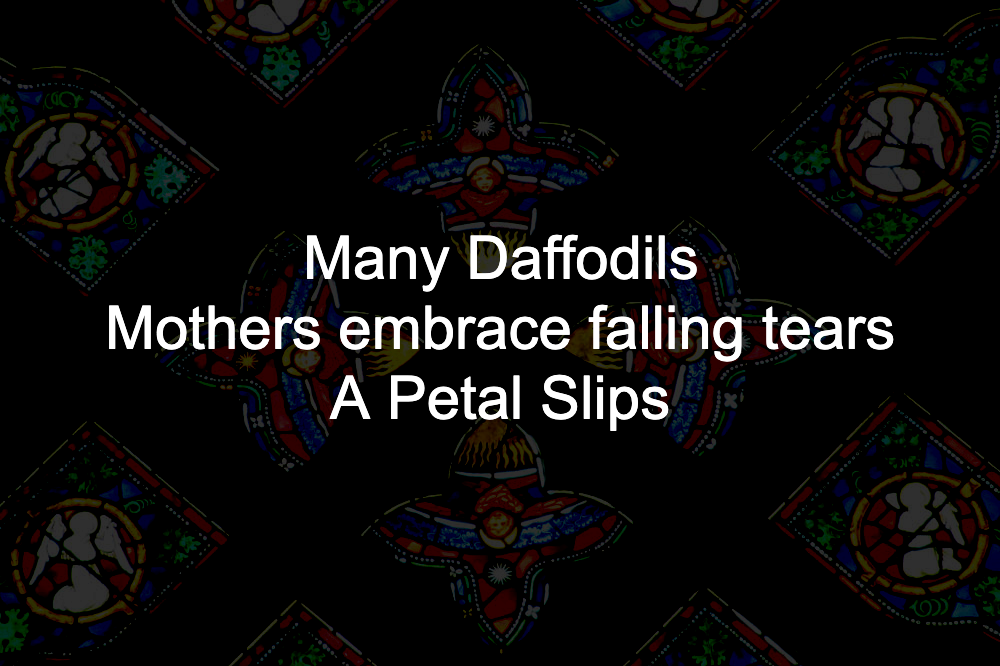
Many Daffodils Mothers embrace falling tears A Petal Slips
In both examples we have an absolute metaphor describing shoes or flowers. There is an allusion to season, but the allusion gets cut by a distancing element.
Give Haiku a try.
Trying to make Bakhtin and the concept of the self through dialogic struggle more evident for students
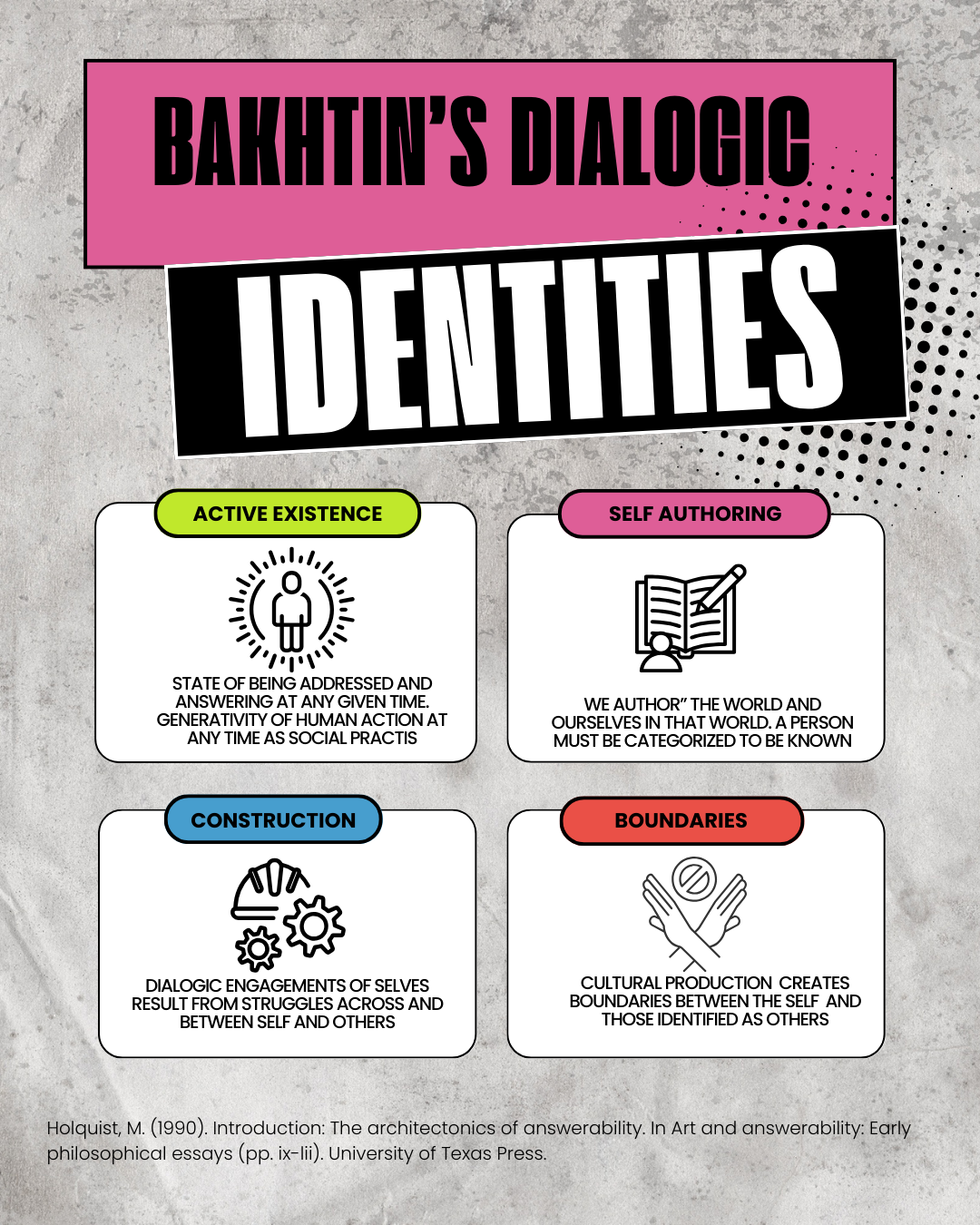
What’s your why? Why are you here?
In the study of open pedagogy, from a theoretical lens of rhizomatic learning, we define our learning subjectives. In other words what learning outcomes do you want to get to by the end.
I also begin our Digital Teaching and Learning II class with an exploration of Learning subjectives. Students come into class with varying skills. Some have experience in the classroom, some write code, others just want to get a baseline understanding of digital texts and tools.
So we write our own subjectives and then align the knowledge and skills the class covers with out our own goals.
##My Goals
For my goals this Summer I want to focus on learning more about pyography and in terms of technology get my podcast up and rolling again.
I will also be spending my time gaining deeper understanding of Endpoint Detection and Response
I have started to get into wood burning. I make small arts and crafts to help with fundraisers.
In class I will document how I learn this craft. Specifically I need to and learn different shading techniques to create contours in design.
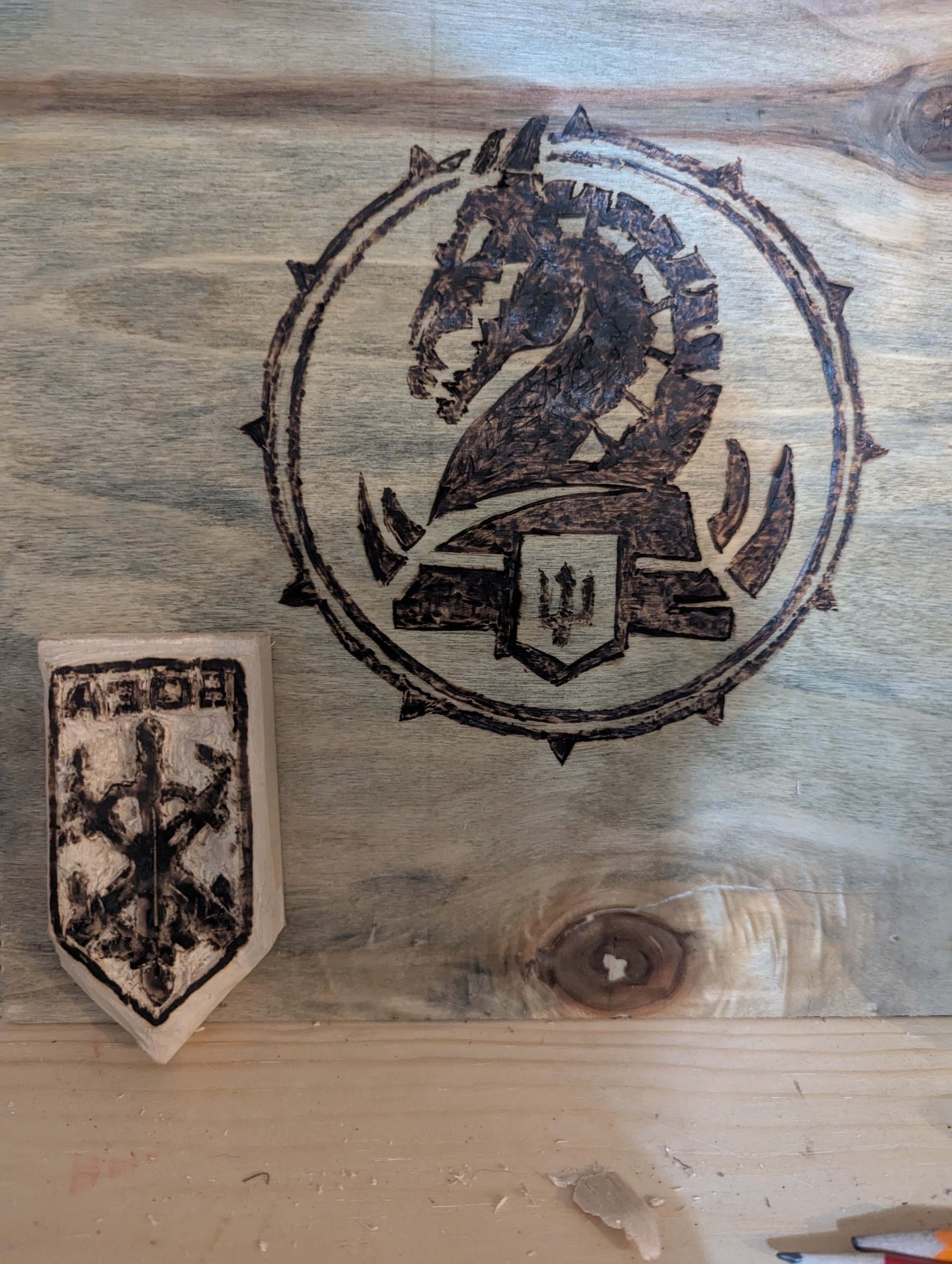
I have even tried mixing in wood carving but for the class I want to focus on just shading skills. Having small goals matters. Success feels good.
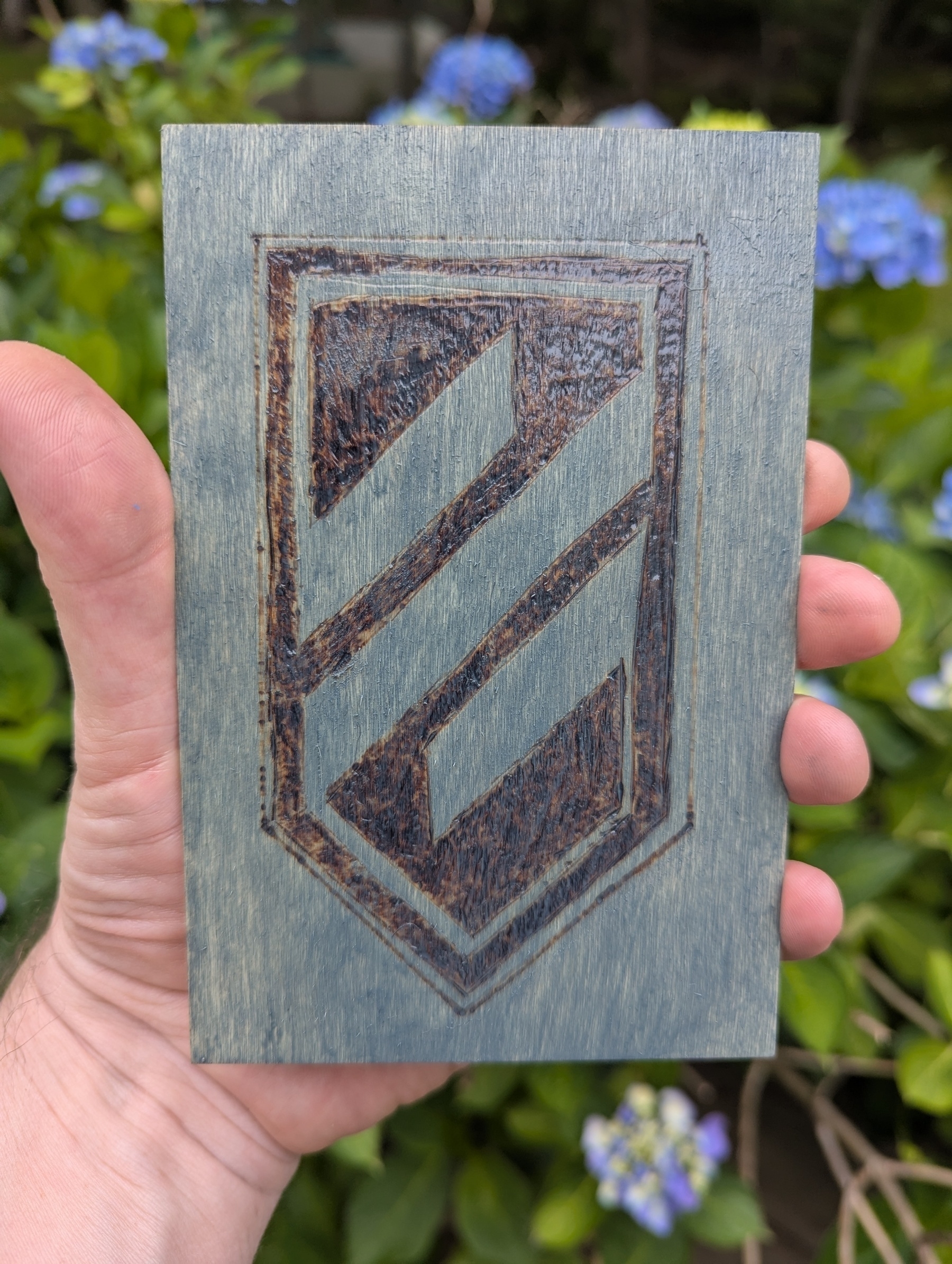
I start by transferring an image. I usually use a knife, but I am learning this is not best. The grooves lead to my iron catching an edge and make lines more difficult. I need to try and use Graphite paper for transfers.

I then start the burning process. I am just starting to learn how to match different tips to different tasks
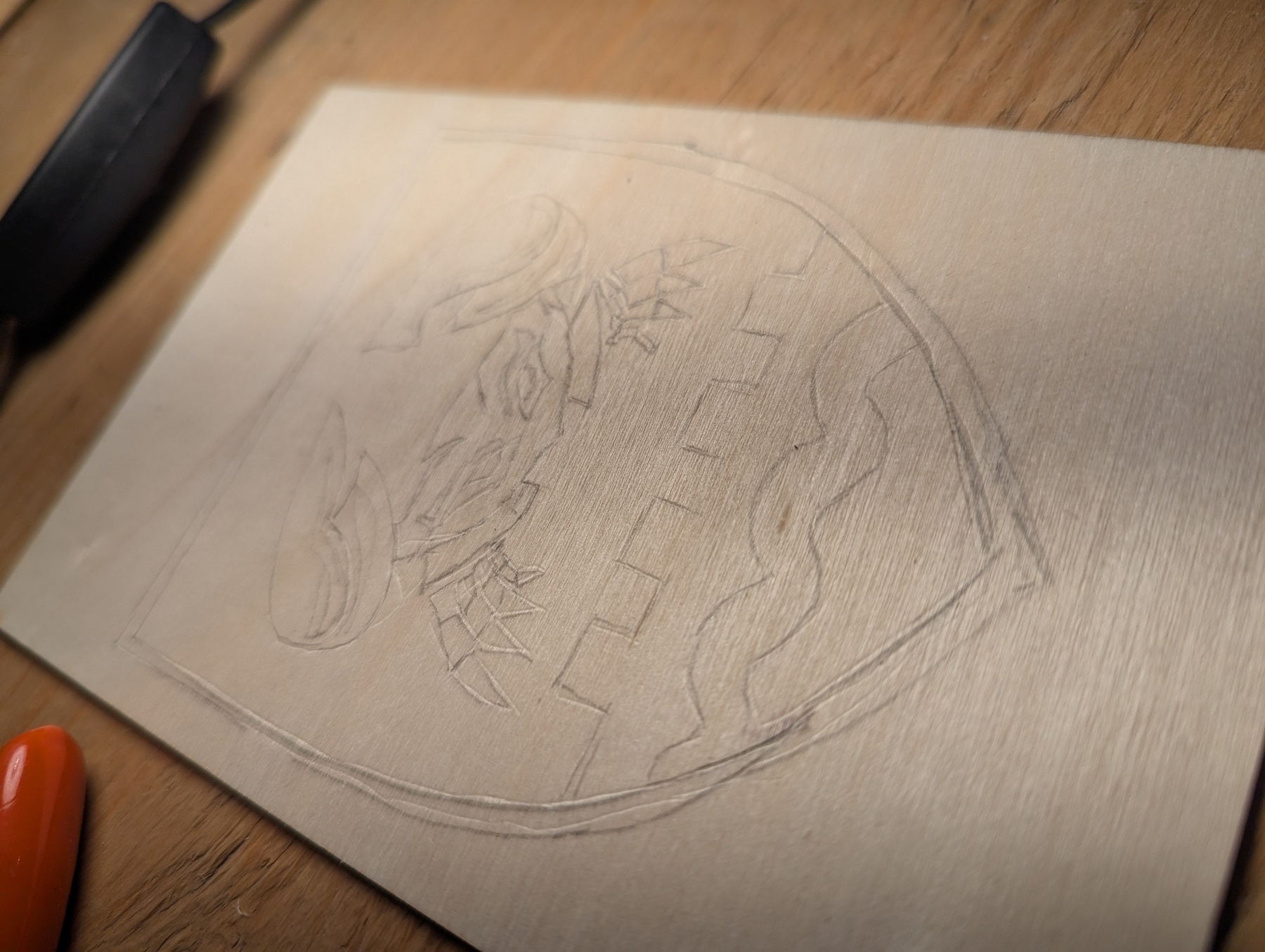
I have had irregular podcasts over the years. I want to relaunch my 2toPonder podcast with this class. It is a show in two minuted that cover a bunch of different learning topics
I also write a ton of cybersecurity curriculum. I want to increase by background knowledge with Endpoint Detection and Response tools. These are becoming essential in the mitigation of risks.
Part of the reason we student open pedagogy is the idea that Cybersecurity is Identity. We need to encourage students to control and own their own story.
It was Erik Erikson’s Childhood of Society in 1950 that moved the idea of learner identity into the Mainstream. He brought constructs set out be Freud and applied them to the every day. There was a very Western American ideal to the construct of identity from a positivist light. But what if Identity is developed as a negation of truth?

Identity flickr photo by fotologic shared under a Creative Commons (BY 2.0) license
Meanwhile Ardono was exploring non-identity as someone in Exile and trained the Marxist traditions Hegleian dialectics. Theodor Adorno was a member of the Frankfurt School. Marxist and Jewish scholars who fled nazi Germany and settled at Columbia University.
Ardono would express a negative, rather than a positive view of Identity. Ardono was striving an idealist social universality in a world of American pragmatism that celebrated individualism. What resulted is a mismatch of Freudian construct of identity and historical materialism. The dialectical tradition of Kant and Hegel allowed Ardono to explore identity as something an object took on against social universalism. Identity became a non-identifier
For Ardono, who was writing about identity as protestors were calling for more Praxis and less lecture (Frierian Criticality), he said no identity is born pure and they emerged as the result of a negation. It was a reaction to a rneconciled, unemancipated concept.
This plays into discussions on social media. Are algorithmic identities real? Who controls them? What does it mean for adolescents when Identity work is a commodity? How do we encourage the use to own your identity through technology?

How do we paint ourselves on the world? In many ways this question resonated in both scholarship and society. Who is I. Are we We? Do I have multiple Mes,
Learning Identity drives literacy. James Gee says Language has two goals, “scaffold the performance of action in the world, including social activities and interactions; to scaffold human affiliation in cultures and social groups and institutions.”
Yet in our schools we focus on literacy as a mans for information acquisition aguired through skill acquisition. But what if Gee is right and words are so much more?
We need to expand our Perspectives when it comes to langauge and encoruagr students to explore identities. As our methiod to do so, we are encouraging each other as reflective blogging
Module Zero focused on you setting up your digital infrastructure to explore open pedgagogy and blogging as a teacher. Giving a student a URL is kind of like giving them a locler or letting them decorate a notebook. They make it their own. The language use becomes an Identity Kit, as Gee would say.
Identity drives so much of learning. Self-Efficacy scholars like Bandura and Zimmerman talk about increasing perfomance by encouraging students to interoogate abilities. Carol Dweck has written on the importance of a “Growth Mindset” all of these are driven by Learner Identity.
Adorno, developed the term “identity thinking” in his work on “negative dialectics.” A member of the Frankfurt School, a group of mainly Jewish scholars who escaped Germany and settled at Columbia University and developed critical theory, Adorno critiques the construct of self.
To Ardono “identity thinking” is a form of thinking which is the most expressive philosophical manifestation of power and domination.
“Dialectics seeks to say what something is, while identarian thinking says what something comes under, what it exemplifies or represents, and what, accordingly, it is not itself.” (1990:149), he wrote. What does this mean for learners
To Ardono “identity thinking” masked the object being identified. Much of this buils on Nietzsche and other Posr-Structuralist thinkers. Yet Ardono pushed us to move beyond simplistic notions of fixed identities. As teachers we have to embrace the dynamic, non-identical nature of both individual experience and the social world that projects identity back on to us.
Swann has introduced the term “identity negotiation " to talk about learning over time.
The scholarship on technology has shifted towards the inclusion of principles related to the development of the autonomous learner. A “growth mindset.” A “self-programmable” learner. We see this in our instructional routines on like PBL, Genius Hours, or even traditional models such as Montsesori
The idea is the learner has agency within the system. Your blog is how you express your agency. Your agency is how you do the identity work as a reflective practioner.

In life you learn to reflect as a maker, learner, and teacher. We often say the word modeling, and it’s true learners will pick up a ton of stuff through mimicry and enculturation. What we often mean is making our thinking out loud and explicit.
I refer to these as backstage posts. You pull the curtain back and explain how you used some tool to make some thing.
For example, I am currently helping an NGO in Ukraine, the Military Chaplains of Kyiv, raise money to get two mobile charging stations for welding.
Mainly online.
You can’t just spam a link, fundraising or not, on social media. You will have your content limited by algorithms. So I am always looking for ways for simple storytelling
I do this by designing “Quotable Quote” posters. You can do that as a teacher. It’s a quick way that allows students to add on additional layers of visual meaning.
When fundraising it creates a recognizable brand and predictable, but spreadable content. A campaign is just text structure cut up over time.
So how to do it?
And you don’t have to use AI.
I am not using LLMs or Generative AI, but simple photo editing of layering images. There are so many artists who donate work to the Knowledge Commons. I’d rather honor their legacy than just use tools that steal their work.
Don’t get me wrong. You can do amazing things as an AI artist. The prompts some designers creates are hundreds of lines long, but I like sharing using Creative Commons photos by people.

Antarctica: Karl the Welder flickr photo by eliduke shared under a Creative Commons (BY-SA 2.0) license
I prefer to search Flickr. I can choose to pick images I am allowed to remix. Technically as a teacher who is writing this post for class i get a lot of leeway with fair Use under US Copyright law. Still, it is nice to use and share artists who allow you to use and share their stuff.
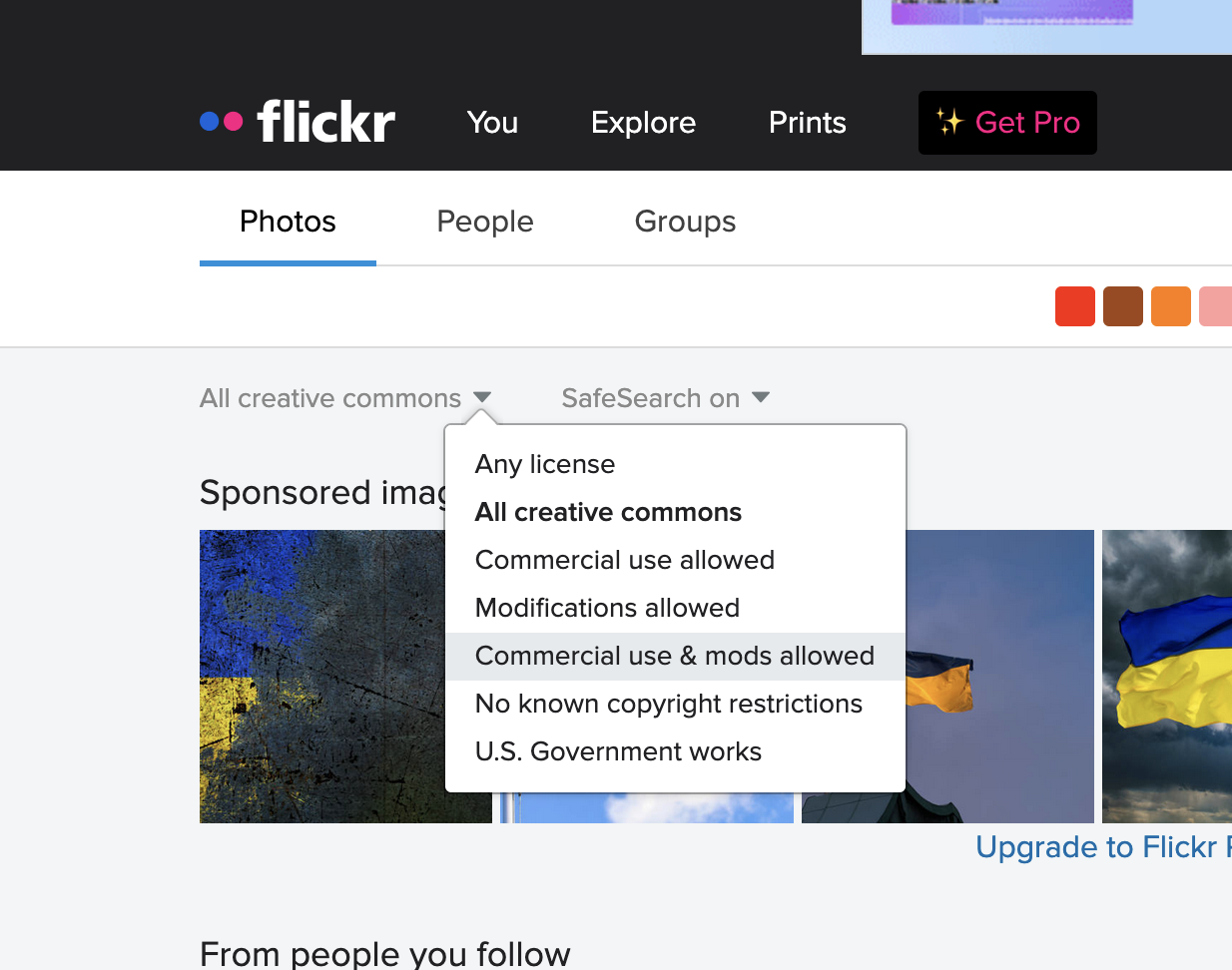
Then when I find an image I have a little tool built into my browser that will generate the HTML for a picture
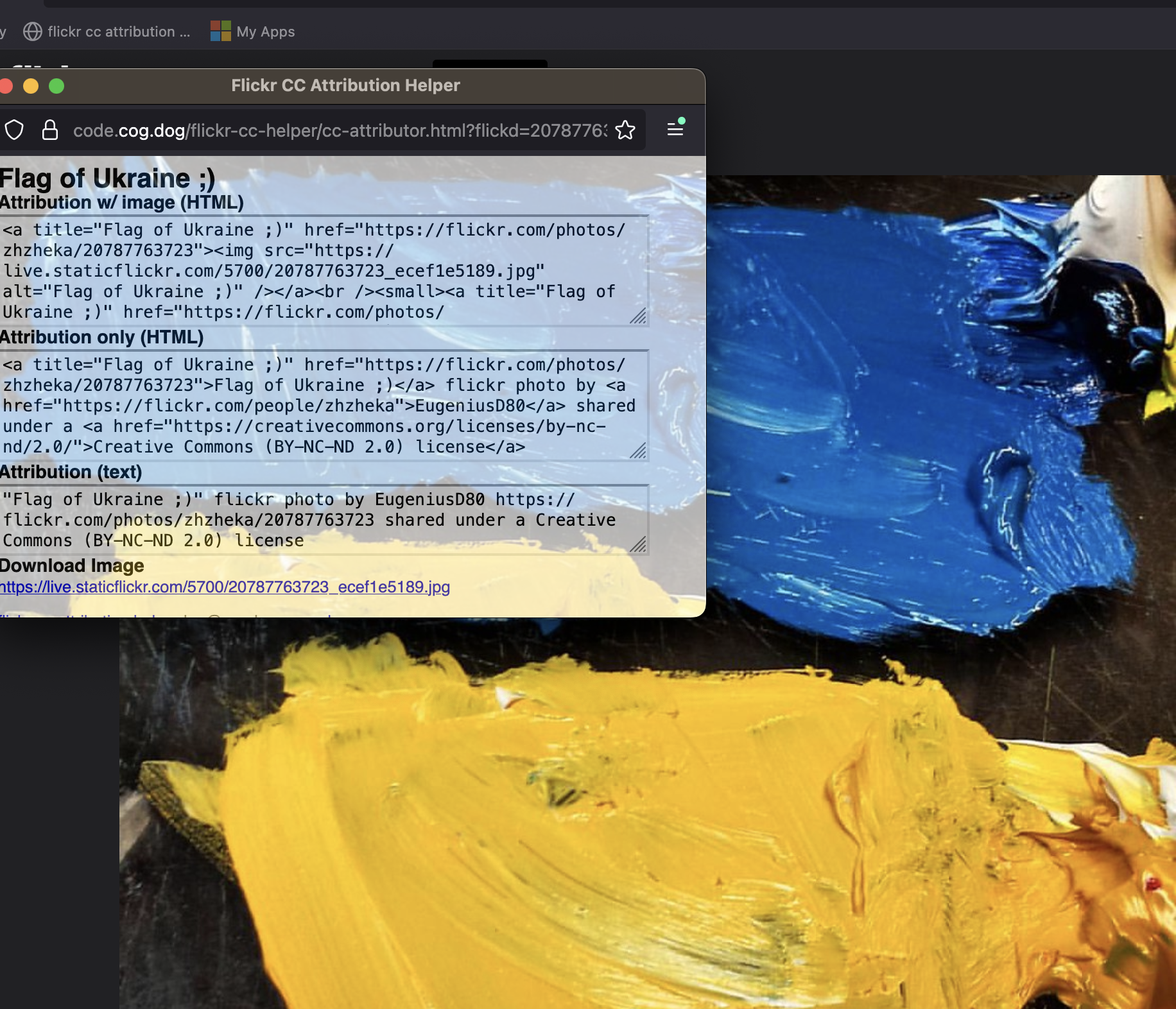
This allows me to copy and paste the HTML into blog.

Flag of Ukraine ;) flickr photo by EugeniusD80 shared under a Creative Commons (BY-NC-ND 2.0) license
Then I use a photo editor to layer the images and get a final product that looks like this.
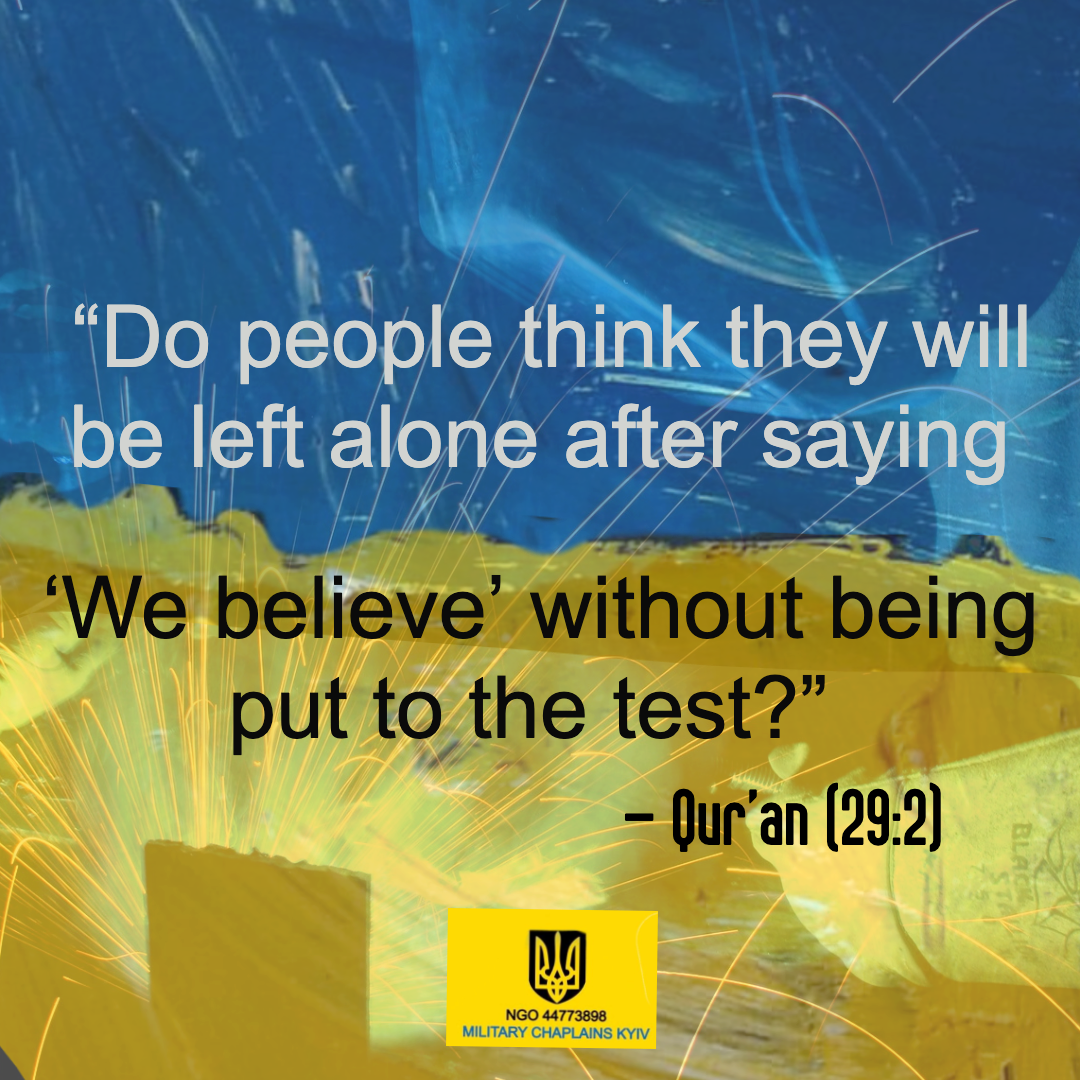
Our next post will describe the basic of layers in photo editing.
Sing new songs in braids of cobalt crickets strumming divided tongues of fire teaching and testimony of truths torn from metal arc of history as stories bend swords into plowshares
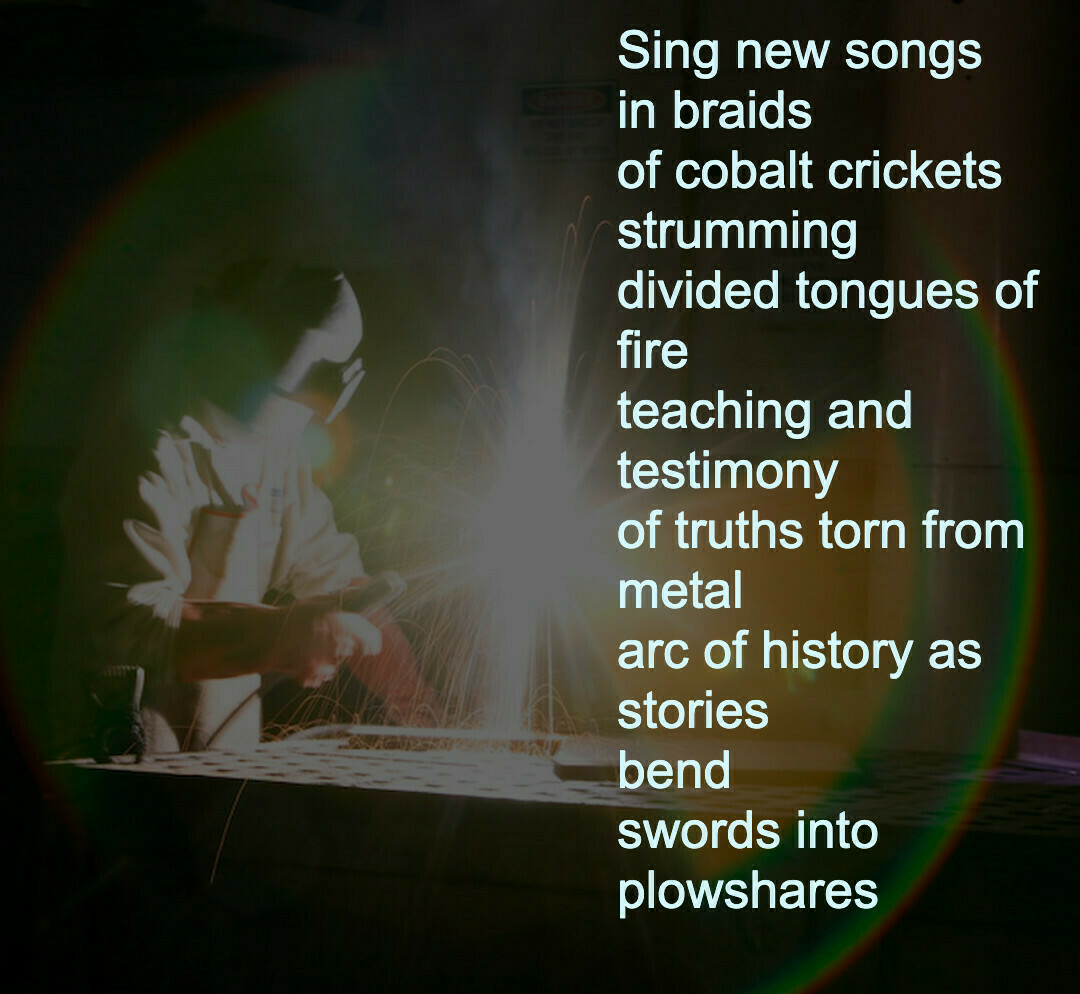
In May I took part in the Ukrainian cultural heritage month for Wikipedia.
It is amazing to see how history has been forgotten, sometimes deliberately.
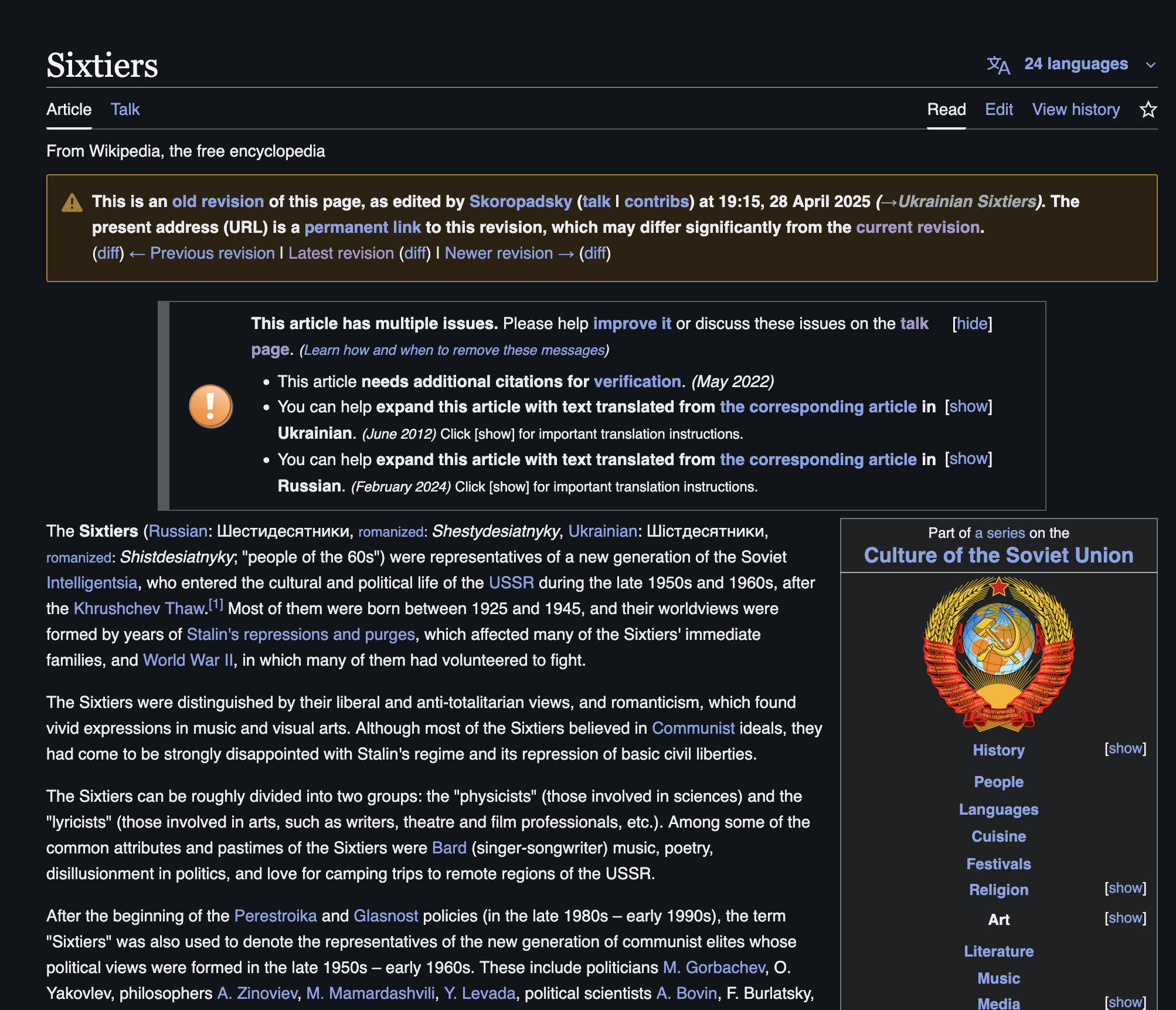
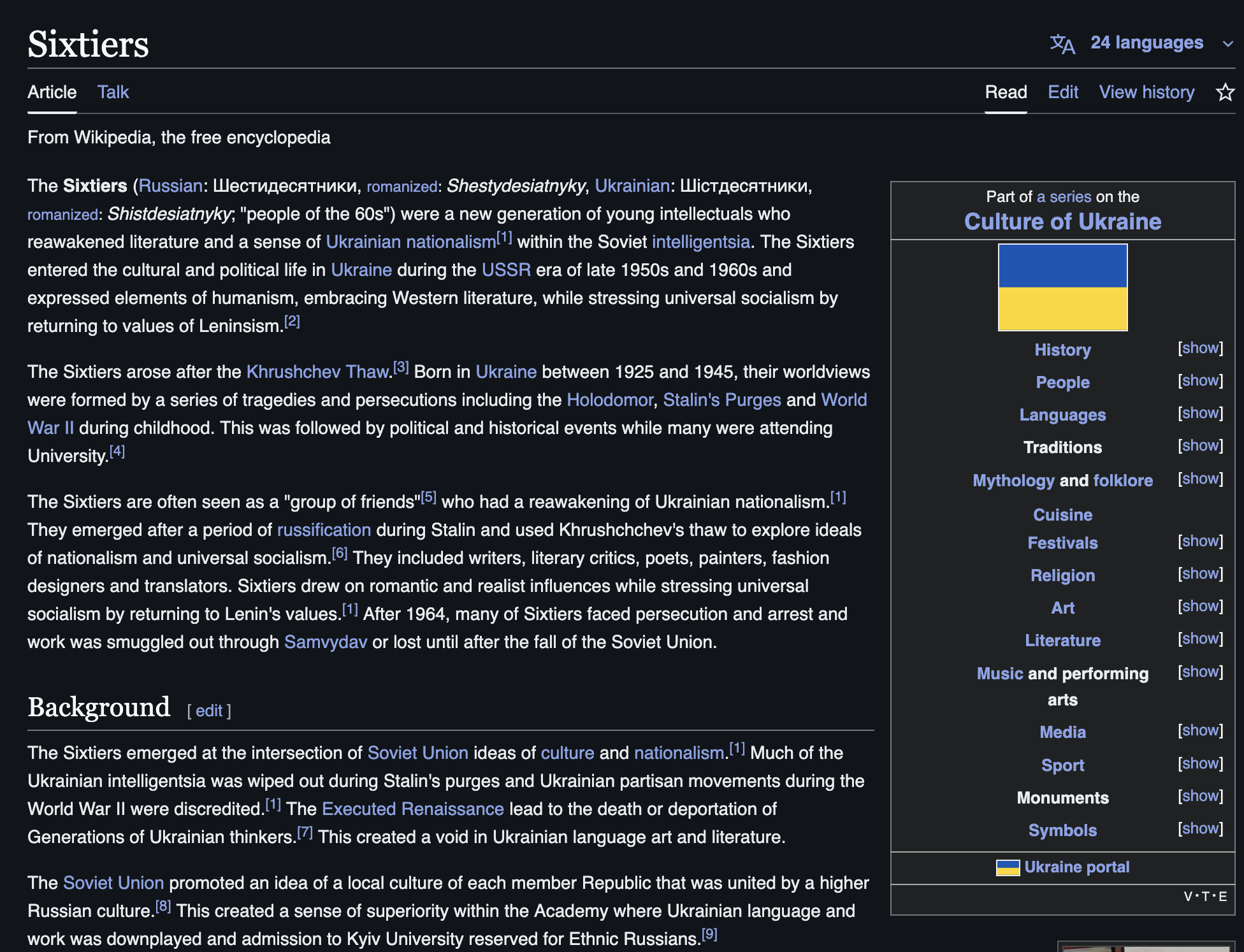
Bryulovs brushes lick at a Spider Web cast in lands of dead souls living in light Dwelling in places always between Justice in strokes of an artists pain. A limb Lost. Life cast as nothing. Now Icarus's wings clipped And carrier pigeons of death spill cotton into streets, silk convoys of fire. Carried by a cossack horse drinking from an enemy trough And tadpoles in the sky blow bridge threads To objects captured Anchor points to A history erased. Triangulating to a new Frame. Prose painting new Victory Shadows bent in smoke Like tridents raised A radius spiraling Valiantly to the sky Awash in Romance
New crucibles play out in patterns of repulsion and rejection clawing at unfolding seconds, unregretted words of double talk generations Does the mouse know? The snap of hammer coiled around songs in poems of our future cadence to when the apocalypse begins Yet hunger drives our rodent friend forward In tongues not of the Ghetto but twisting cycles of God turning to Deep Purple while flare guns burn everything to the ground just for a bite of Cheese Is that the real test?
Carried on broken butterfly wings you see it voice embraced in perspectives cordially disassembled in a frenetic dance of traditional imagery Colors torn bouncing in a monolithic unity shadows cast upon Camazots to Camelot shine in Ardono's negative dialects wings flap but no one flies
A light flickers
commas of darkness
hide shadows casting
Laureates of lowlifes
who
decided to starve
under street lamps,
humming at
age of
failure
a lone car passes, plastic bumper
missing
They tear at empty boxes
of wine, corners bent
soggy
shrink wrapped words
poured over cracked curbs
and our Captain dines
while piano players take a helm
over a Hostage's
last draw
Taking meals with Bonia dried tongues born of Bucha lapping at gaunt fingers ossified textures dangling empty scraps wrapped in cloth cut from skeletons draping over starvation twice visited in tongues half centuries forked a barn burns, a dog barks Politics imposed, with finality linocut slips into Ether as folks grow into myth
Scalpels, dull and forgotten
Three Angels Sing Above the Street
calls silenced
withered flowers,
cut by invaders carrying
chauvinistic scepters, drip in
lust by false revival of minorities
spirits who hunt smell
of words in deadly games
These days of our distress
Blue moons silenced
In Pizza shops dripping from Dali paintings
fire from skies
and joyless days
same wine in stolen bottles
and the same dregs
poured over three glasses
days of glory, gone?
still they toil, hunchbacked and calloused
days of betrayal, now days of the gun
heavy with briny blood
Does it have to be destiny?
to see pain so perceived
in miseries, time will forget
we can plant poplar seeds
in place of Headstones
Pnuema,
breath, spirit
a void
Given to
walking about
Place
a thing that
surrounds or
Force taking
up Space?
Pnuema,
breath, spirit
a void
exists
imperfect
fit in Atomists
Dreams of
laughing
philosophers
@moxi3ann @EyeofhorusC @adhdwonderwoman This Eagle Ed?
Who planned the legal strategy behind the StopTheSteal coup attempt?
@moxi3ann @EyeofhorusC @adhdwonderwoman Important to remember the Phyllis Schlafly Eagles split with Eagle Ed in 2016.
It was the PS Eagles who gave Lt Gen (ret) Mike Flynn the John Singlaub Award in 2018. 
@moxi3ann @EyeofhorusC @adhdwonderwoman For those who don't know the Queen of Mean and voice of school choice.
She was a Bircher since 1961 (though most quit by 68)
She lead a phonics lesson at Council for National Policy in 1984. 
@moxi3ann @EyeofhorusC @adhdwonderwoman I bring up the 2016 split @ChrisMurphyCT because it marks a turning point in Eagle Ed's turn to russia.
But isn't weird the only Charter School the PS Eagles hated was run by Gulen.... The same group Mike Flynn was illegally lobbying against on behalf of Turkey. 
@moxi3ann @EyeofhorusC @adhdwonderwoman @ChrisMurphyCT And schools and Turkey would have been all up in the @ericadamsfornyc trial
But Eagle Ed and Paralegal Barbie dropped the charges.
Isn't that weird?
@moxi3ann @EyeofhorusC @adhdwonderwoman @ChrisMurphyCT @ericadamsfornyc hey @threadreaderapp unroll please
In this episode we juxtapose Physics, phish, and Birmingham
Wither Solid States Split on asymmetric winds open to elements which melt into struggles of Birmingham jazz greats and low-rent apartments spill into Cabana covered streets, in a stifling heat pushing against division lines